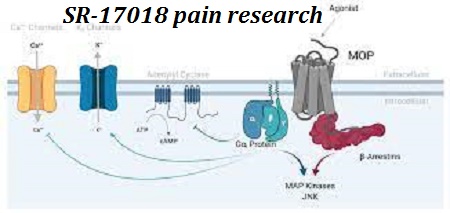Why SR-17018 is Important in Pain Research
The study of opioid receptors remains a critical field for understanding pain regulation and developing safer alternatives to traditional opioids. In recent years, SR-17018 pain research has gained attention due to the compound’s unique receptor profile. Unlike conventional opioids, SR-17018 demonstrates selective signaling at the mu-opioid receptor, a property that has made it a subject of interest for scientists studying analgesia without the full spectrum of side effects.

Insights from SR-17018 Preclinical Studies
Several SR-17018 preclinical studies (see PubMed: PMID 29287936, PMID 30905287) have explored the compound’s analgesic potential in animal models. Findings suggest that SR-17018 produces strong antinociceptive effects while displaying a lower tendency to induce respiratory depression or physical dependence compared to morphine-like drugs.
Key insights from these studies include:
- Biased Agonism – SR-17018 favors G-protein signaling over β-arrestin recruitment, which may explain its distinct pharmacological profile.
- Sustained Analgesia – Research indicates prolonged pain relief in rodent models, pointing toward potential therapeutic benefits.
- Reduced Tolerance Development – Early studies suggest less tolerance buildup compared to standard opioids, though further work is needed.
While results are promising, it is important to emphasize that SR-17018 remains strictly a research chemical, and its safety or efficacy in humans has not been established.
Building Reliability Through Trusted Supply
For researchers replicating these studies, access to high-purity material is essential. Impurities or inconsistent batches can distort outcomes and reduce reproducibility. Vendors such as 9RoyalStreet support scientific progress by providing SR-17018 with Certificates of Analysis (COA), transparent batch data, and proper storage guidelines. This ensures that preclinical work can be carried out with confidence and consistency.
As the body of literature grows, SR-17018 may become a cornerstone in opioid receptor pain research, but for now, its role remains in the laboratory as scientists continue to uncover its potential.
